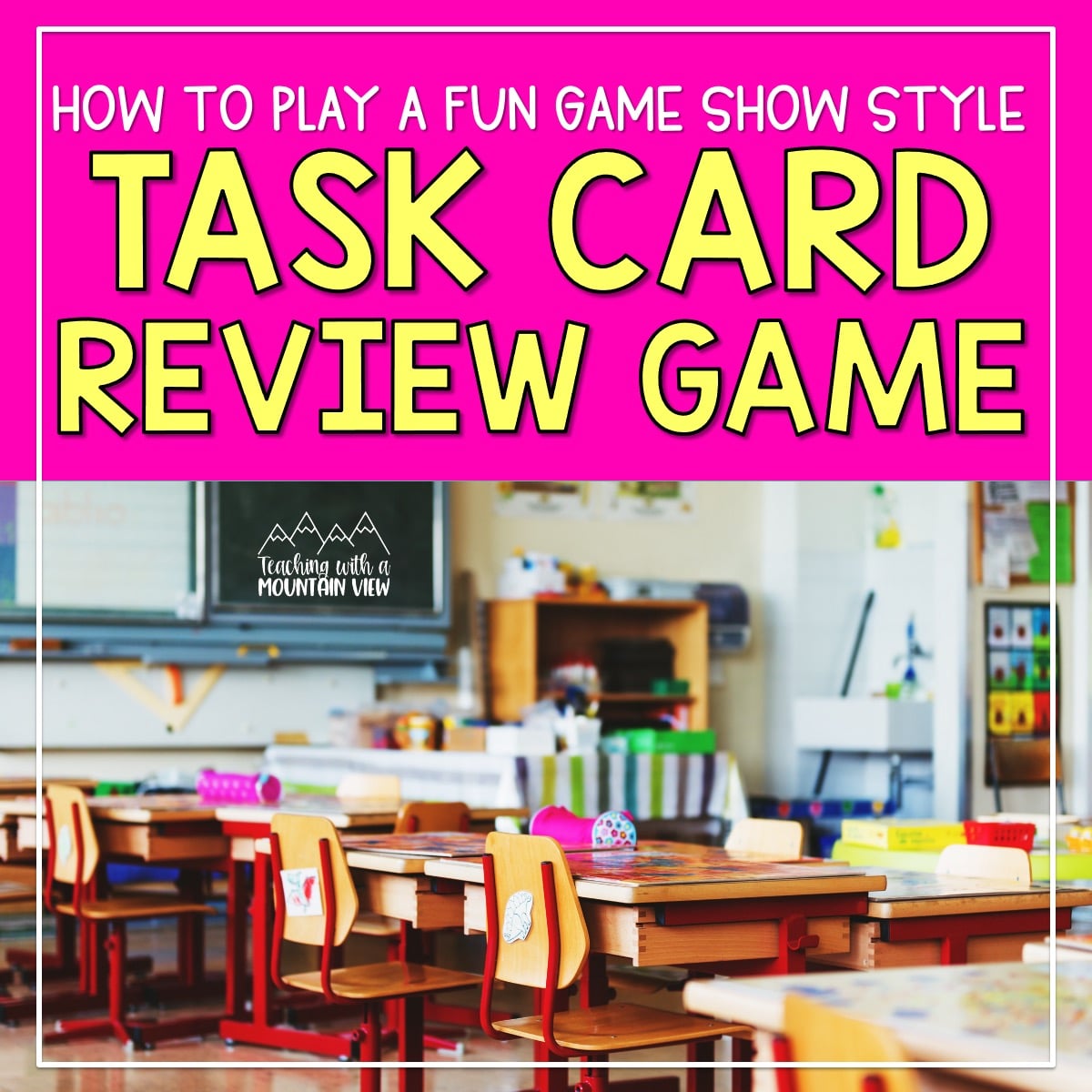At one point or another, I think we have all played Jeopardy with our classes as a whole class review game. It’s fun, the kids love it, and it’s an easy way to review! On the other hand, It can be a struggle to keep all students engaged with each question. Here are some tried and true tips to keep students on their toes when reviewing content. We used this game to review fraction operations and skills, but you can use task cards for any topic to mix it up.
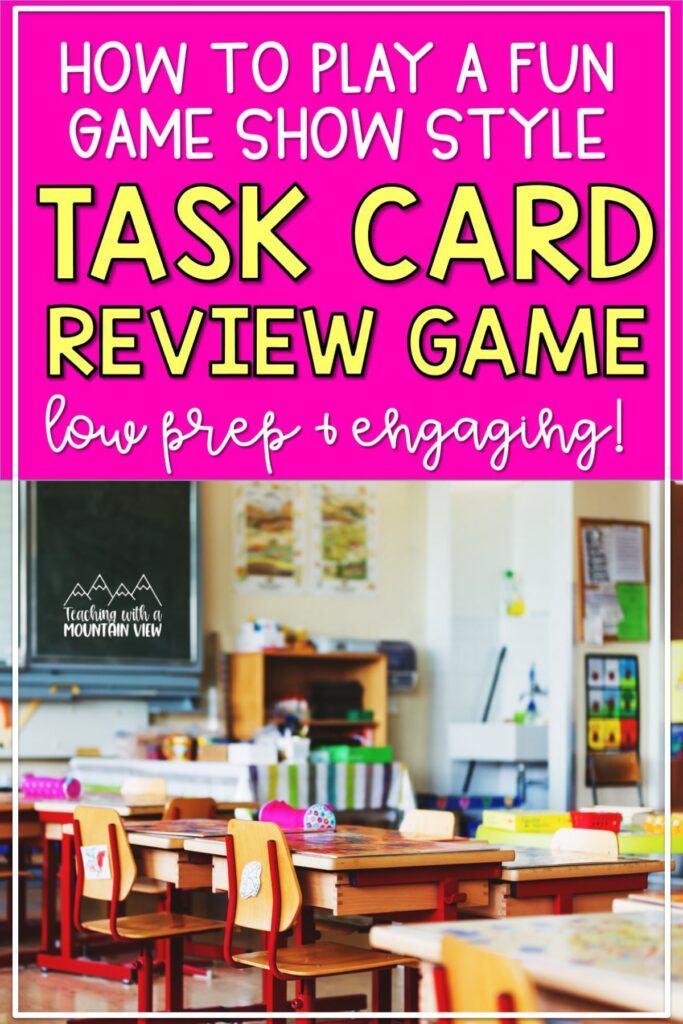
Setting Up The Game Board
A pocket chart makes the whole class review game super simple to set up. I set up the game board to include a wide variety of fraction problems including all of the operations, mixed skill review (comparing, simplifying, mixed numbers, etc.) and word problems. I put a task card in each slot, with increasing difficulty and level of critical thinking needed to answer the problem. I covered each card with a point value ranging from 100-500. Here is a look at my finished board.
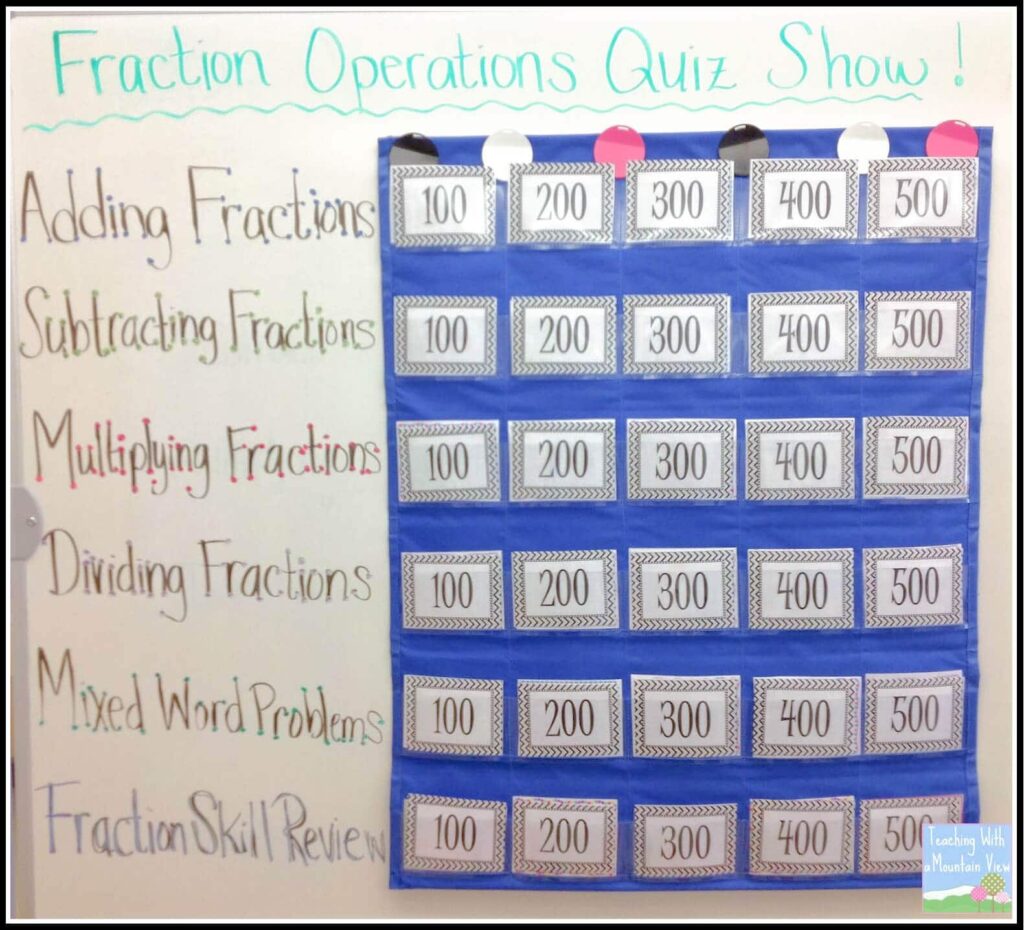
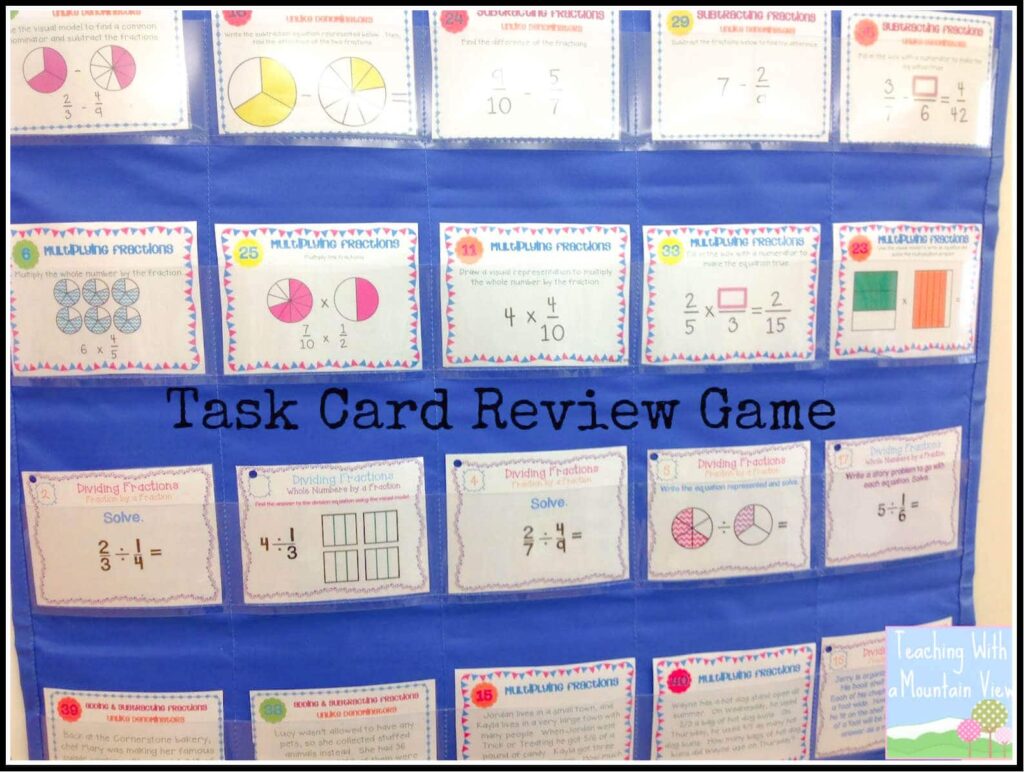
You can download the number cards and the recording sheet I used HERE. It’s nothing fancy because I wanted the students to have plenty of room to do their recording. The frames for the numbers are from Pink Cat Studio. Love her cute frames and borders!
Whole Class Review Game Engagement Tips
I knew I needed a way to make sure everyone was involved in the game. I also want to make sure that each group wasn’t only as strong as its strongest member (and vice versa).
Each group of students had a “silly card” (named by my students). This silly card rotated through the group each round, and whoever had the card was in charge of reporting their answer, and being able to explain how they arrived at their answer. The group had to work together to solve the problem, but only the person with the card could go up and present the answer.
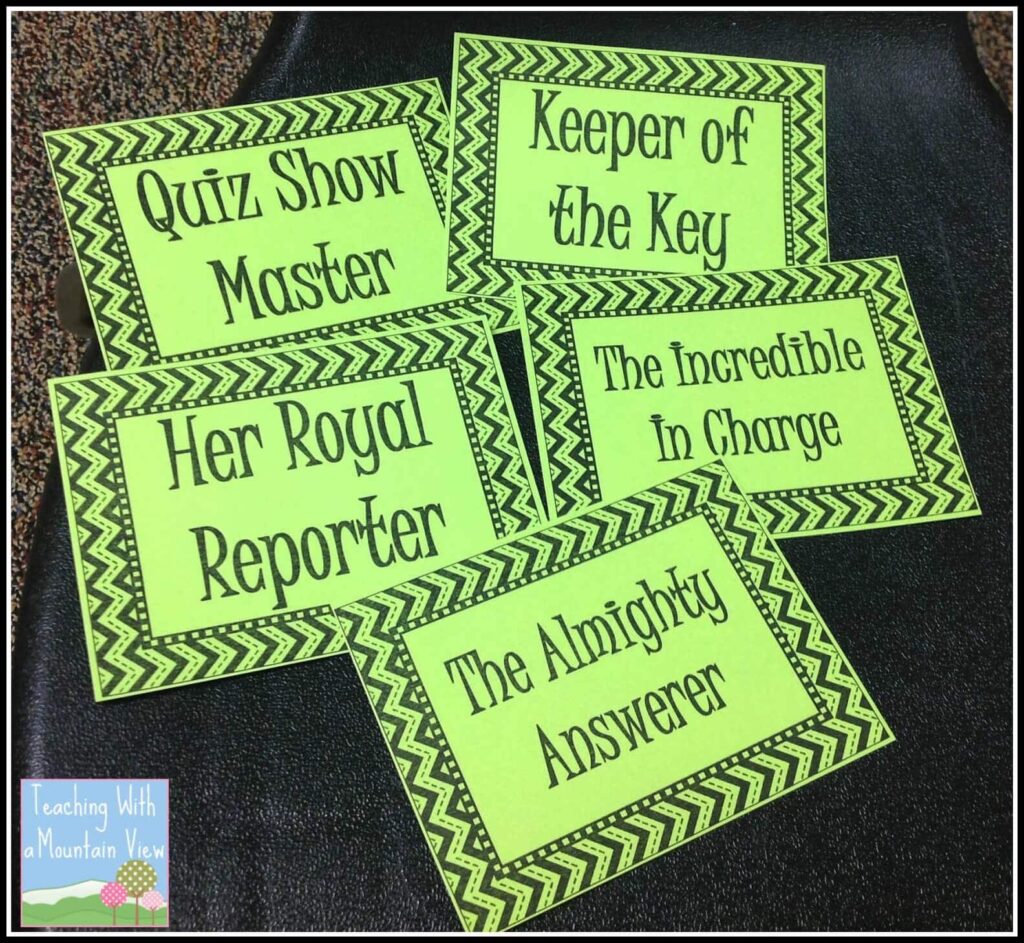
I got a little goofy with the titles, but students thought they were hilarious. I also made a recording sheet that mirrored the whole class review game board. Underneath each answer space was a smaller space divided in two sections. In the left section, students had to initial who was in charge of the answer. On the right side they recorded their points.
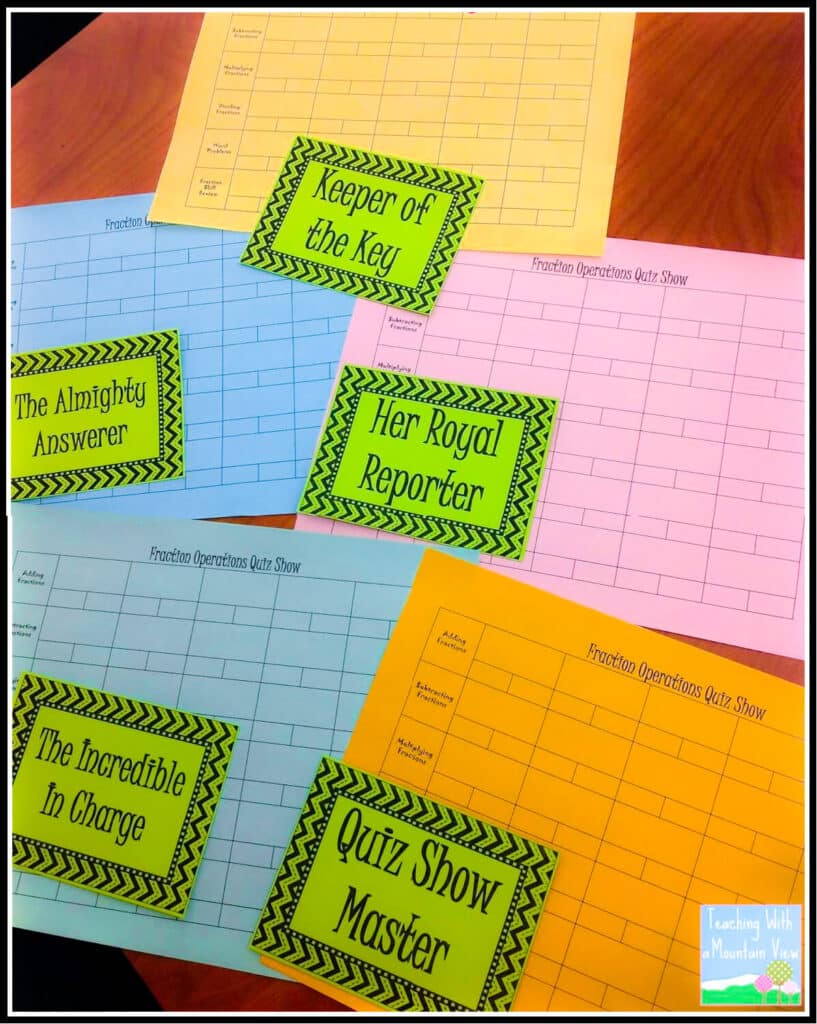
I also kept all students engaged by giving each group a chance to earn extra points each round, regardless of whether or not they were the first group with the correct answer. This was also a sneaky way to add more multiplying fractions. More on scoring below!
How to Play
I started by selecting the first category and value. After that, the winner of each round got to select the next question. I did a 3, 2,1 countdown before putting the task card on the document camera for all students to read and solve themselves.
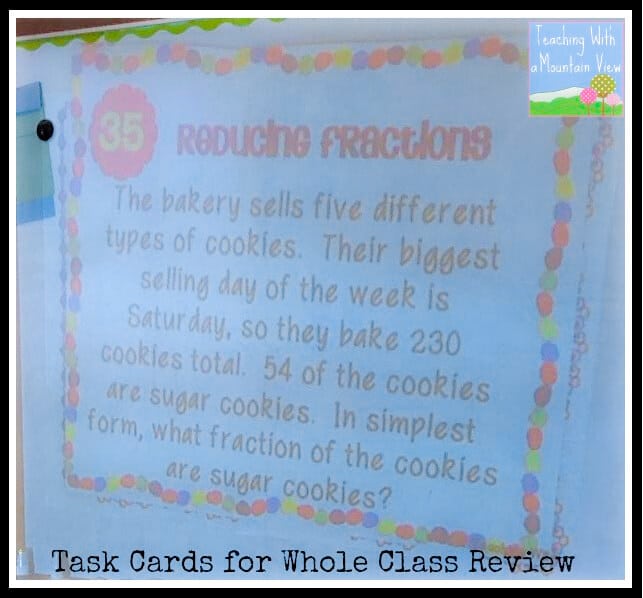
When the group had solved the problem, they wrote their answer on their answer sheet. The reporter had to walk (not run, slide, jump, or dive) up to the board and stand on one of five spots. The first person to be done stood on spot one, second on spot two, etc.
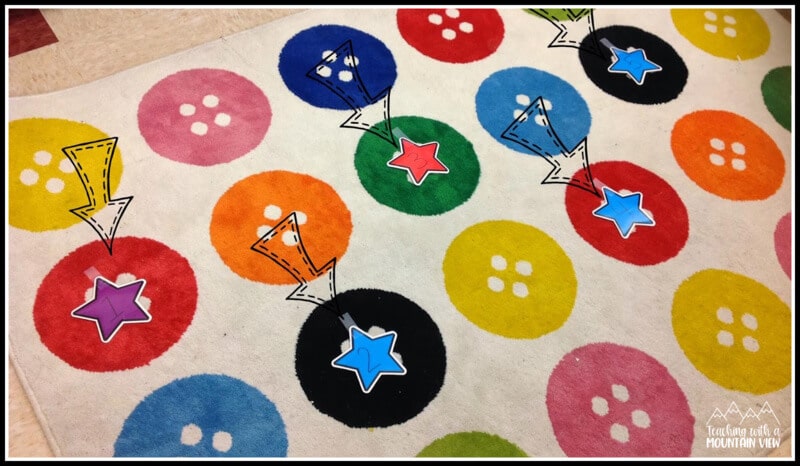
I loved this part because it got them up and moving, and different combinations of kids were at the front each time. We also rotated tables throughout the course of the game so that no group had an unfair proximity advantage to the front.
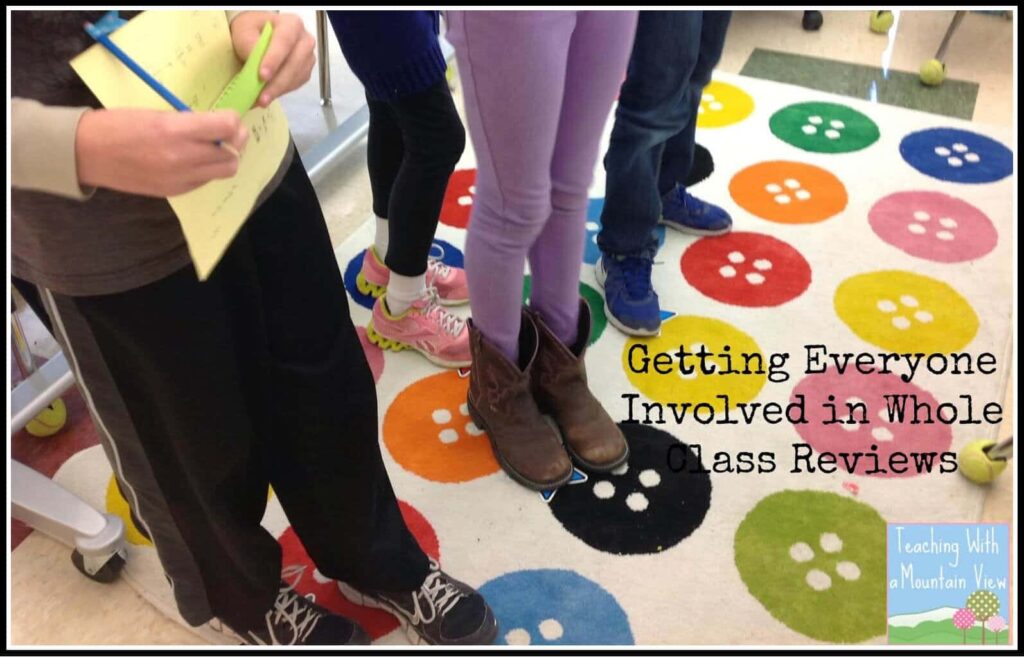
Finally, I also wanted to keep the kids guessing about who was going to have to present their answer (again, I wanted EVERYONE to have a full understanding of the problem we were working on). I put the numbers 1-5 in a jar and once I had a representative from each of the five groups standing on a spot, I drew a number. The person standing on that star had to share their answer and how they arrived at their answer. This made sure all groups would have an equal chance of answering and explaining out loud, not just the fastest group.
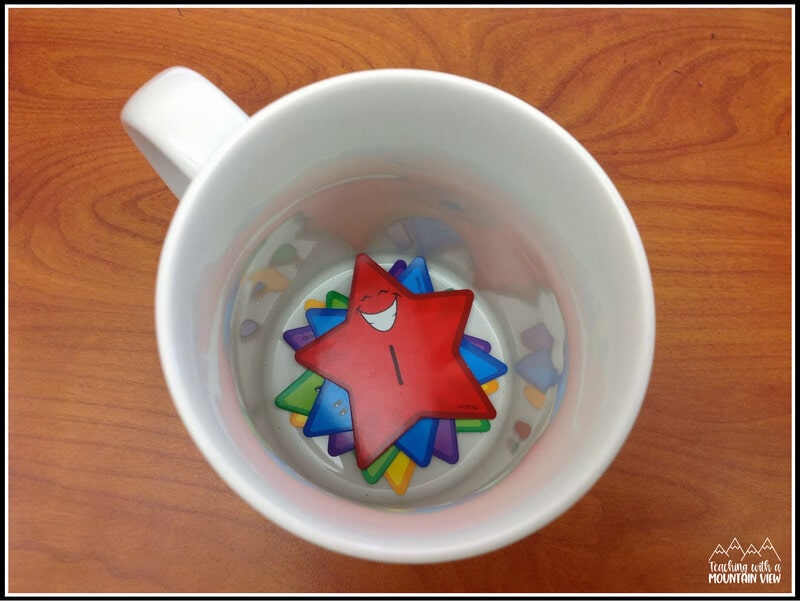
I was a little worried the process might take too long, but they did great with it. It was also valuable for the students to hear other explanations for solving the problem. The students who got the answers wrong were able to very quickly figure out what they had done wrong.
Scoring
I mentioned before that each group could earn points each round, even if they weren’t the first group with the correct answer. Here’s how it worked.
If the student standing on star 1 (meaning they got the answer and made it up to the board first) got it correct, their team earned the full value of the points. If the person standing on star 2 got it correct, their group got 4/5 of the points for that card, and so on.
Not only did they have to do more multiplying fractions to determine their score, but this also helped me to emphasize that, no matter what, accuracy was more important than speed. It was better to be the 5th group finished and get 1/5 of the points than to be the 1st group finished, get it wrong, and get no points. As I mentioned above, students kept track of their points on their recording sheet, directly under the problem they were solving.
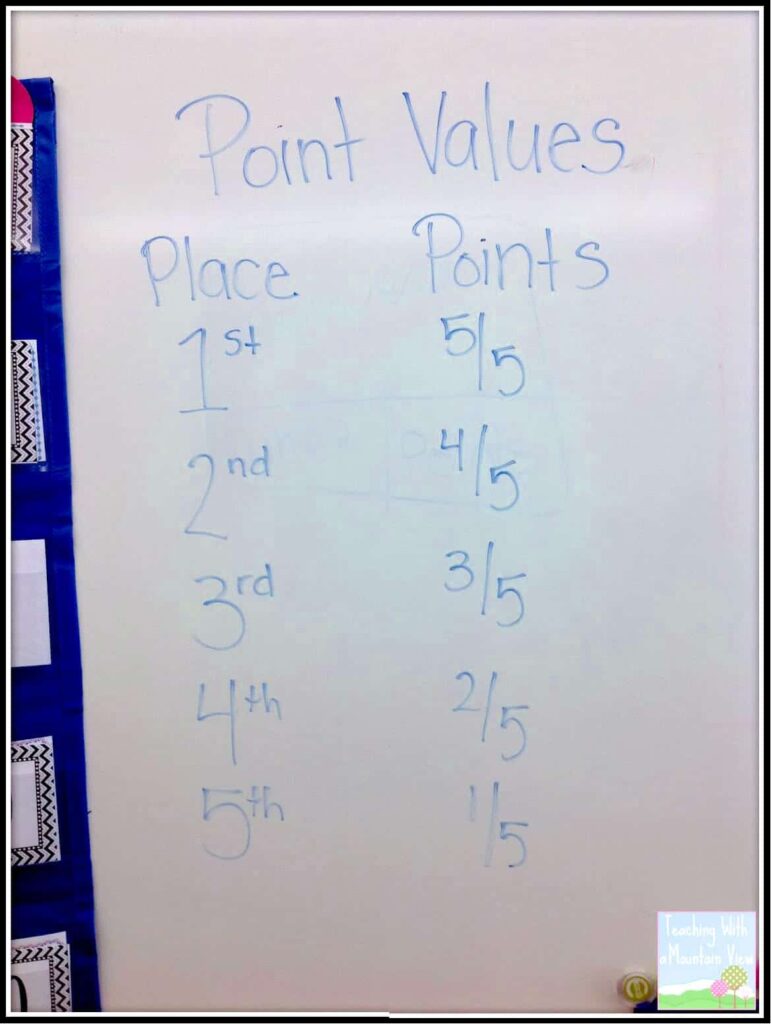
When the game is finished, students add up all of their points to see which team was the winner for each category and also for the overall whole game winner. The kids absolutely adored playing this, and I think they appreciated the few little twists I put on it to get everyone involved. They also enjoyed the chance to get up and moving. Of course, it’s not fail proof, but the kids were engaged and practicing their math.
This picture cracks me up because I could not get a picture of the kids working that didn’t have a blurry hand or pencil it in. They were working like pros on these problems!

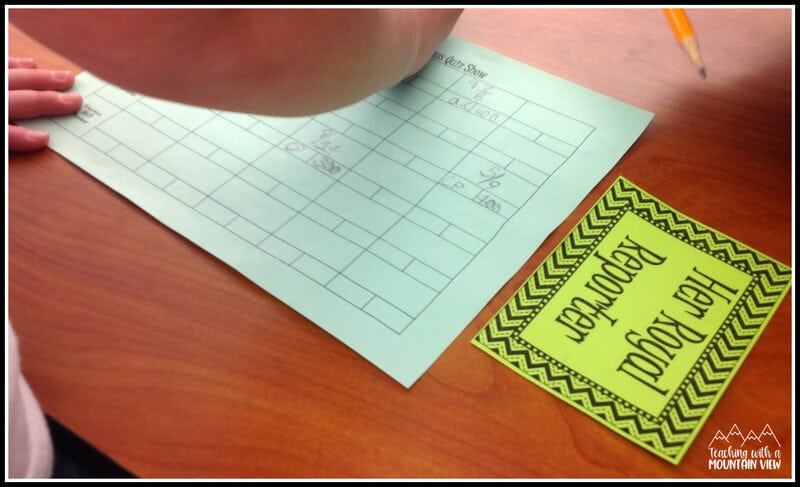
Suggested Task Cards
You can truly do this game with any concept or any set of task cards.
If you’re also reviewing fractions, here are the task cards I used in each section. They are differentiated so that there are cards appropriate for values 100-500.
- Adding & Subtracting Fractions Task Cards (Like Denominators)
- Adding & Subtracting Fractions Task Cards (Unlike Denominators)
- Multiplying Fractions Task Cards
- Dividing Fractions Task Cards
- Ultimate Fraction Task Card Bundle
- BUNDLE and save with this Fractions Operations Resource Bundle
Free Fractions Operations Review
If you’re looking for a more traditional review for operations with fractions, you can download this free quiz instead, or use it as a follow up to the whole class review game. It has both printable and digital options for a fractions review (or quiz!) that covers all fraction operations. This activity includes fraction word problems and number problems with mixed numbers, unlike denominators, etc. It is perfect for grades 5+, or for your ambitious 4th graders!
More Class Game Ideas
if your students enjoyed this Jeopardy-style review game, they’ll love these too!
Mary Montero
I’m so glad you are here. I’m a current gifted and talented teacher in a small town in Colorado, and I’ve been in education since 2009. My passion (other than my family and cookies) is for making teachers’ lives easier and classrooms more engaging.







